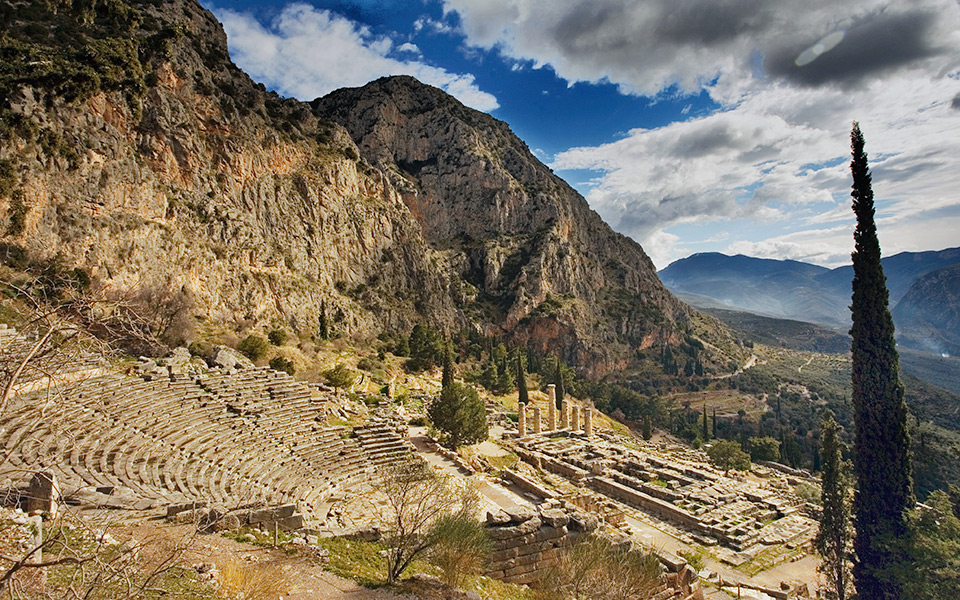Following the mythical footsteps of Apollo and Dionysus, a cultural route that begins in Eretria and ends in Delphi links ancient theaters of Evia and mainland Greece. Some are well-known, others all but forgotten. All are stops along the route designed by Diazoma, an organization seeking to highlight these important ancient monuments.
STARTING POINT ERETRIA
The ancient theater in Eretria on the island of Evia is not set on a natural incline, as most Greek theaters are, but on a man-made semi-circular mound. Another rare characteristic is the underground passage linking the stage structure with the orchestra, which was more typical of Roman theaters. Initial construction is dated to the late 4th century BC, the second phase to 300 BC, while its third and final reconstruction took place in the Roman period (after 198 BC) when it was likely converted to an arena for public spectacles.
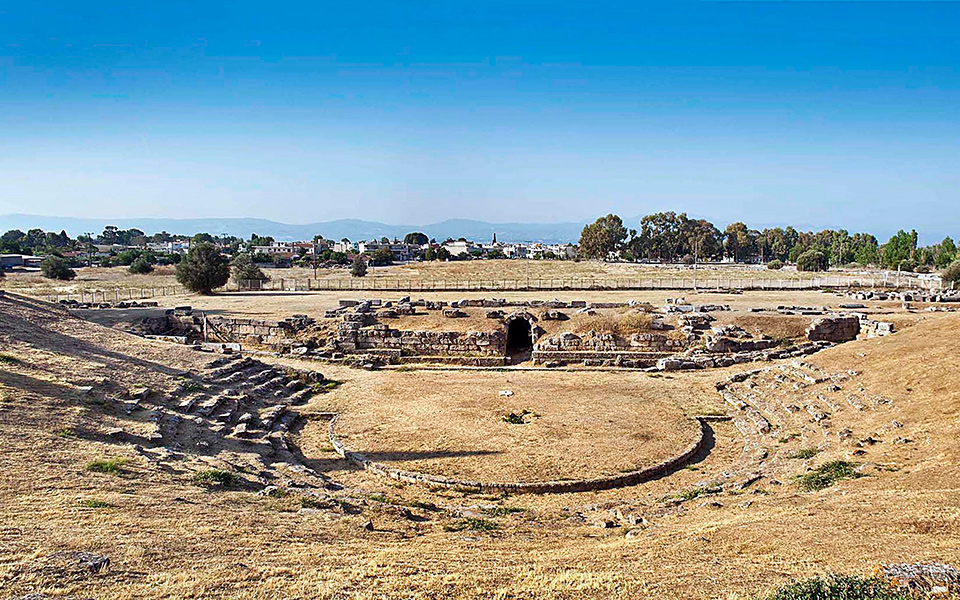
THE CABEIRIUM OF THEBES
The next stop is the city of Thiva or Thebes; less than an hour away from the city is a largely unknown ancient theater. An unpaved road leads to the theater, which was once the site of a sanctuary, the ‘Cabeirium’ where gods of the underworld were worshipped. Today the stage still occasionally comes alive with music and impromptu performances.
MYTHICAL HELICON
The route then takes us to the foot of Mount Helicon, or Elikonas, the mythical home of the nine Muses. The mountain remains a welcoming place, particularly in the fall when the oak trees along the eastern slope come alive with color.
The nearest stop is Evangelistria, a village unchanged by tourism. From there, the inland route to Aghia Anna (or Koukoura) through the oak forest is a nature-lover’s paradise. Once back on the paved roads of Central Elikonas, the beaches and charming harbors such as Ai Giannis on the Corinthian Gulf are just a half-hour away. Alternativelly head through the pines into the dense forest and the beautiful area of Arvanitsa with a playground and a taverna ‘tasty’ enough to make everyone happy.Here tavernas offer quality meat and the guest houses guarantee a quiet night in the clean mountain air.
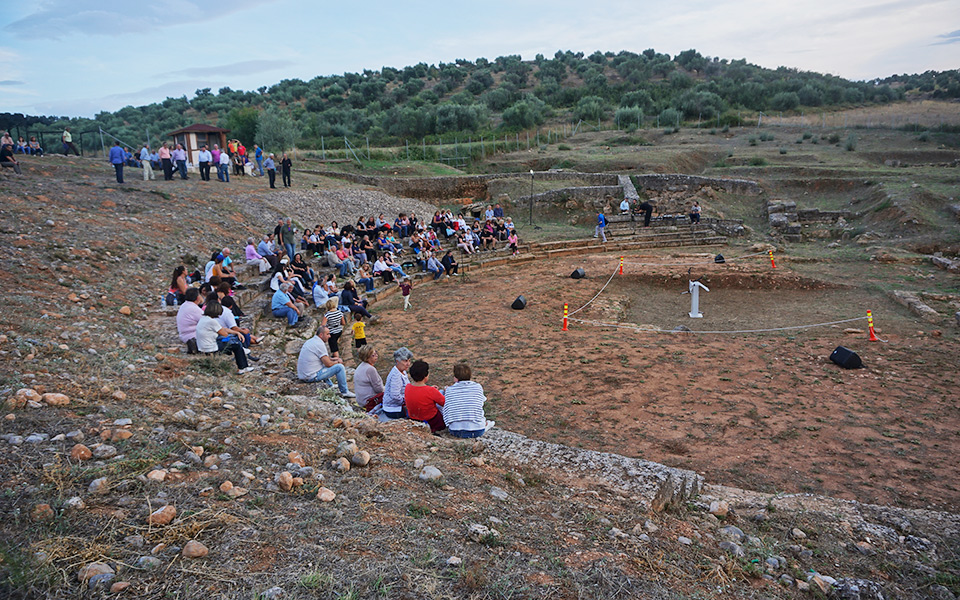
© Diazoma
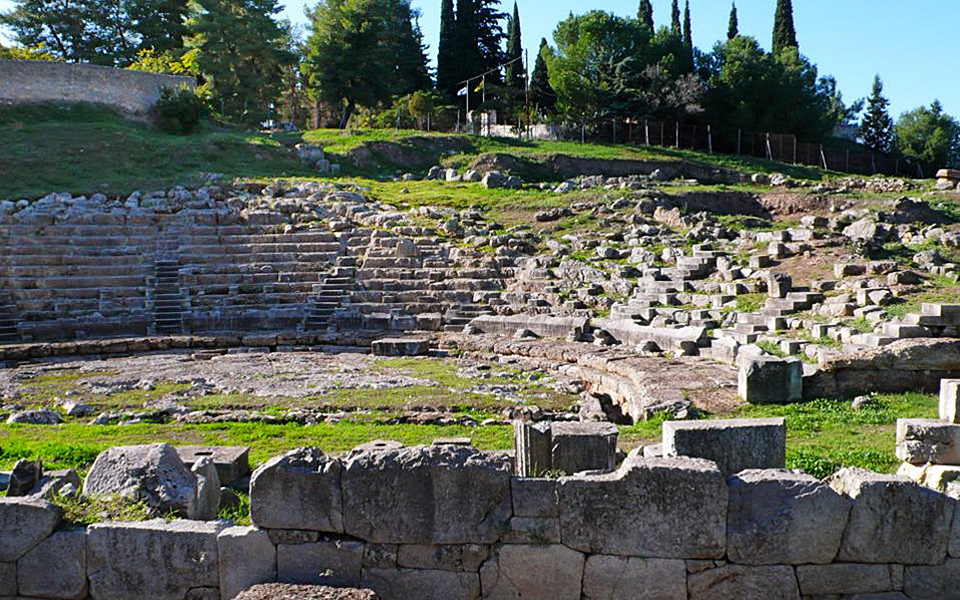
© Vassiliki Kerasta
FROM ORCHOMENOS TO CHAERONEA
The base of Mount Elikonas is in the valley of Kopaida, which was created by the drainage of a lake between 1880 and 1930. The Hellenistic theater at Orchomenos is another important milestone in 4th century BC Boeotian history. The theater, along with the Treasure of Minyas (the domed 13th century BC tomb) and the Byzantine church of the Virgin Mary of Skripou (873-874 AD) are now part of an archaeological park.
Just 15 minutes further is the ancient theater of Chaeronea. The rows of seats are carved into the eastern rocky slope of the acropolis, yet nothing remains from the scenic building; the lower level is still buried and awaiting excavation. Nearby, the imposing Lion of Chaeronea sits along the main road, marking the site where soldiers of the Sacred Band were buried after the battle of 338 BC.
TIP!
The archaeological park at Orchomenos and the nearby monuments at Chaeronea and Delph are popular sites and open year-round.
For more information on these monuments, contact the Antiquities Ephorates: Phocis, tel. (+30) 22650.823.13, efafok@culture.gr • Boeotia, tel. (+30) 22620.235.59 and 809.45, efavio@culture.gr • Evia, tel. (+30) 22210.224.02 and (+30) 22210.940.80, efaeuv@culture.gr.
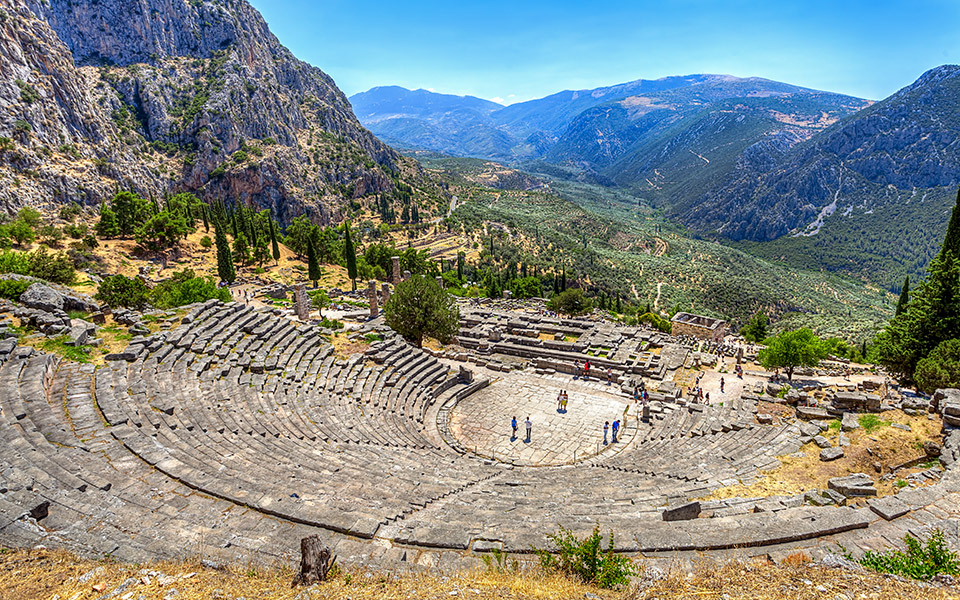
© Shutterstock
DELPHI, THE NAVEL OF THE WORLD
Poetry, music, theater competitions and religious festivals have all seeped into this skillfully carved face of Mount Parnassus. The ancient theater of Delphi is located inside the Temple of Pythian Apollo. It was initially built with local limestone in the 4th century BC, but its current form dates back to the 1st century AD.
Diazoma and its president, Stavros Benos, hope that by restoring the theater, it can become a venue for modern theater events. Delphi, of course, is worth visiting all year-round. Summers are very busy, while fall and spring are ideal for hiking in the area. One option for trekking is the trail from Delphi to the Corycean Cave (about 4-5 hours).

